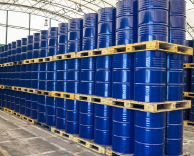Understanding the Unit of Viscosity: A Key Parameter in Lubrication
Introduction to Viscosity
Viscosity is a property that all fluids share and which determines their resistance to flow. It's how much a fluid flows when you apply a force. Viscosity. The concept of viscosity is very important to many industries, such as lubrication for various types of machines that heavily rely on this choice for efficiency and longevity.
Viscosity can be mainly divided into two types: absolute viscosity (or dynamic viscosity) and kinematic viscosity. If you know what each of them is and how they differ, you can make an informed choice of lubricant for your industry.

Importance of Viscosity in Lubrication
In lubrication, viscosity controls how well a lubricant will flow between and separate surfaces in relative motion, thus minimizing friction, preventing wear, and minimizing energy loss. And, using too low a viscosity lubricant will not provide the desired lubrication, while too high a viscosity lubricant will increase the drag and energy required for movement.
Oil and grease applications Industrial lubricants application machine oil machine oil machine oil is selected based on their viscosity grade, each depending on the exact application that the oil or grease is to be used for.
Viscosity SI Units and Other Measurement Units
Viscosity is measured using several units, depending on whether it is dynamic viscosity or kinematic viscosity.
Dynamic Viscosity (Absolute Viscosity) Units
- SI Unit: Pascal-second (Pa·s) or milliPascal-second (mPa·s)
- CGS Unit: Poise (P) or centipoise (cP), where 1 P = 0.1 Pa·s
- Common Industrial Use: Centipoise (cP) is frequently used in the lubrication industry applications.
Kinematic Viscosity Units
- SI Unit: Square meter per second (m²/s)
- CGS Unit: Stokes (St) or centistokes (cSt), where 1 St = 10⁴ m²/s
- Common Industrial Use: Centistokes (cSt) is the most widely used unit in industrial lubrication, with ISO VG ratings based on kinematic viscosity at 40°C.
Understanding Absolute Viscosity (Dynamic Viscosity)
Absolute viscosity, also known as dynamic viscosity, refers to a fluid's resistance to shear stress. It measures the force required to move one layer of fluid over another.
Formula:
Where:
- = dynamic viscosity (Pa·s or cP)
- = applied force (N)
- = area of the fluid layer (m²)
- = velocity gradient (s¹)
Dynamic viscosity is used to determine how a lubricant behaves under mechanical stress and is critical in applications involving gears, hydraulics, and compressors.
Understanding Kinematic Viscosity
Kinematic viscosity is the ratio of dynamic viscosity to the density of the fluid. It represents how fast a fluid flows under gravity.
Formula:
- = kinematic viscosity (m²/s or cSt)
- = dynamic viscosity (Pa·s or cP)
- = density of the fluid (kg/m³)
Kinematic viscosity is widely used in industrial lubrication standards such as ISO VG ratings, which categorize lubricants based on their kinematic viscosity at 40°C
Kinematic Viscosity & Viscosity
Dynamic viscosity indicates a fluid's systematic resistance to movement, kinematic viscosity takes into account not only the viscosity but also the density of the fluid. In lubrication, the kinematic viscosity-to-viscosity relationship allows us to predict the behaviour of a lubricant under realistic service conditions.
For More Information - Click Here.
Unit of Viscosity Coefficient and Its Function
Shear stress and shear rate are related to the viscosity coefficient of a fluid. In the case of Newtonian fluids, it often refers to dynamic viscosity. Furthermore, in industries such as metalworking, automotive lubrication, and hydraulic systems, where a specific viscosity is integral to the process, the coefficient of viscosity is essential in the flow of fluids.
Units and Methods of Measurement of Viscosity
Viscosity measurement needs special instruments that are used accurately to choose the best lubricant.
Common Techniques for Measuring Viscosity:
- Kinematic viscosity: Capillary, Viscometers, Ubbelohde, Ostwald
- Dynamic Viscosity: Brookfield Viscometer Rotational Viscometers
- Falling Ball Viscometer: Based viscosity of a falling ball's speed through the fluid
- Petroleum Fields: Redwood and Saybolt Viscometers.
Thus, each of the methods gives an insight into the viscosity behavior of the lubricant under the respective conditions.
Conclusion
Knowing how viscosity measurement units work and what they mean for lubrication is essential when choosing the right lubricant. Static viscosity and kinematic viscosity are two different individual viscosities but share intermolecular properties. SI Units of Viscosity , such as Pascal-seconds and centistokes, assist the industries to ensure the lubrication performance, less wear, and better life of machinery.
Learn more about our services and industry insights by visiting our official LinkedIn page: Minimac Systems
FAQs:
- Dynamic viscosity: SI units are Pascal-second (Pa·s); CGS units are Poise (P).
- Kinematic Viscosity: m²/s (SI units), St (CGS units).
- Dynamic viscosity: Pascal-second (Pa·s); dimension ML-1T-1
- Kinematic viscosity: SI unit: m²/s; dimension: L²T-1





